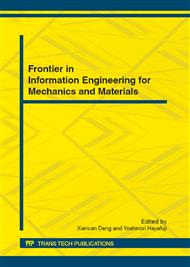p.130
p.134
p.139
p.143
p.147
p.152
p.157
p.162
p.167
Thickness of Magnesium Alloy Cylindrical Cup in Pressure-Lubricating Deep Drawing
Abstract:
Forming process of AZ31B magnesium alloy cup parts in pressure-lubricating deep drawing was simulated by Dynaform at room temperature. The technological parameters which influence the wall thickness difference of cup parts were investigated in this paper, including internal pressure, blank holder force and punch corner radius, etc. Compared with the deformation behaviors of magnesium alloy in mechanical deep drawing and pressure-lubricating deep drawing, the wall thickness distribution of cup parts was discussed. The result shows that preferable deformation behaviors can be obtained in pressure-lubricating deep drawing when adopted adaptive technological parameters.
Info:
Periodical:
Pages:
147-151
Citation:
Online since:
July 2012
Authors:
Price:
Сopyright:
© 2012 Trans Tech Publications Ltd. All Rights Reserved
Share:
Citation:


